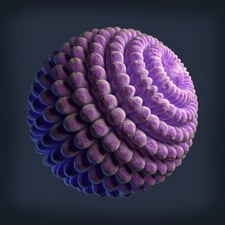 Viability assays are strategies and techniques that are generally used to determine whether or not an organ, cell, or tissue remains viable or could potentially recover its viability. In general, viability assays will look at the cells or tissue involved to see if they still react and move as they are supposed to. Mitotic activity, mechanical activity, and motility are all used throughout a viability assay for this reason.
Viability assays are strategies and techniques that are generally used to determine whether or not an organ, cell, or tissue remains viable or could potentially recover its viability. In general, viability assays will look at the cells or tissue involved to see if they still react and move as they are supposed to. Mitotic activity, mechanical activity, and motility are all used throughout a viability assay for this reason.
Dye Exclusion Viability Assays or Cell Death Assays
Dye exclusion viability assays begin by creating a cellular suspension. A dye will be introduced to this suspension. Some popular dyes include naphthalene black, erythrosine, and trypan blue. Once the dye has been introduced, the solution will be examined using either an optical microscope or a hemocytometer. Viable, whole cells will not be able to be penetrated by these dyes -- only the cells that have been damaged beyond recovery will be. Once the dye has permeated, it will be able to determine which percentage of the cells within the test sample was viable and which percentage were not. Dye exclusion viability assays are useful when testing a sample to determine the amount of cells still viable. It is a direct and fairly fast method.
Dye Uptake Viability Assays
Similarly, dyes can also be introduced that can only be taken up by healthy cells, rather than dyes that are rejected by healthy cells. A neutral red staining can be introduced to a sample that will penetrate a living cell but that will not penetrate dead or dying cells. This is a dye uptake method. Once the red stain has been introduced, the sample can be viewed through the use of an optical microscope. Again, the sample can then be expressed as a percentage of viable cells. Dye uptake is also a generally accurate and easy to use method of viability assay.
Fluorescent Viability Assays
Fluorescent viability assays use diacetyl fluorescein, which is hydrolyzed into fluorescein. This will give cells a fluorescence under the right light. Only healthy cells will be able to give off a green fluorescence. Non-viable cells or cells that cannot recover viability will give off red fluorescence instead, as they will use either propidium iodide or ethidium bromide.
Dye Release Viability Assays
Dye release methods can be used such as a neutral red release assay, which is a cytotoxicity test. A dye release assay is generally used for immediate results. Substances on the cell membrane may have been exposed to toxic effects; a dye release viability assay is used to determine these toxic effects as soon as possible. Because of this, dye release viability assays are generally utilized when the result needs to be performed quickly.
A viability assay will become necessary any time the cell viability of a tissue, organ, or individual cells is desired. However, the type of viability needed may depend on the cellular structure itself. In general, it is fairly simple to determine whether cells are whole or healthy within a sample -- but determining whether they are working as they should may have an additional layer of complexity and require a functional test.
Mitochondrial Assays
These assays are generally used when cell death may be imminent or on-going. A mitochondrial assay will be able to separate different stages of the apoptosis process, utilizing Resazurin and Formazan. This will be used when it is suspected that cell death in a tissue or an organ could be on-going.
Functional Assays
Functional assays may be completed dependent on the specific type of material that is being tested. Frequently, whole organs, red blood cells, or sperm may be tested for viability throughout medical procedures. A functional assay will be based on the normal function of these specific cells. Sperm motility and viability, for instance, are often determined simply through an optical microscope and by the knowledge of ordinary sperm function and behavior. Red blood cells may be assayed not only regarding whether they are viable or non-viable, but also whether they are deformed, whether they are fragile, and whether they have the right ATP level and hemoglobin content. Finally, assays may be completed on organs in entirety simply through the process of transplantation.
In general, assays to determine the viability and health of individual cells are fairly easy to complete -- but they may not indicate whether or not the cell, tissue, or organ is operating as it should. If it's necessary to ensure that the cell or cell tissue is operating correctly, a further functional assay may be needed.
For a detailed look at G-Biosciences viability assays down load the bioassays handbook









